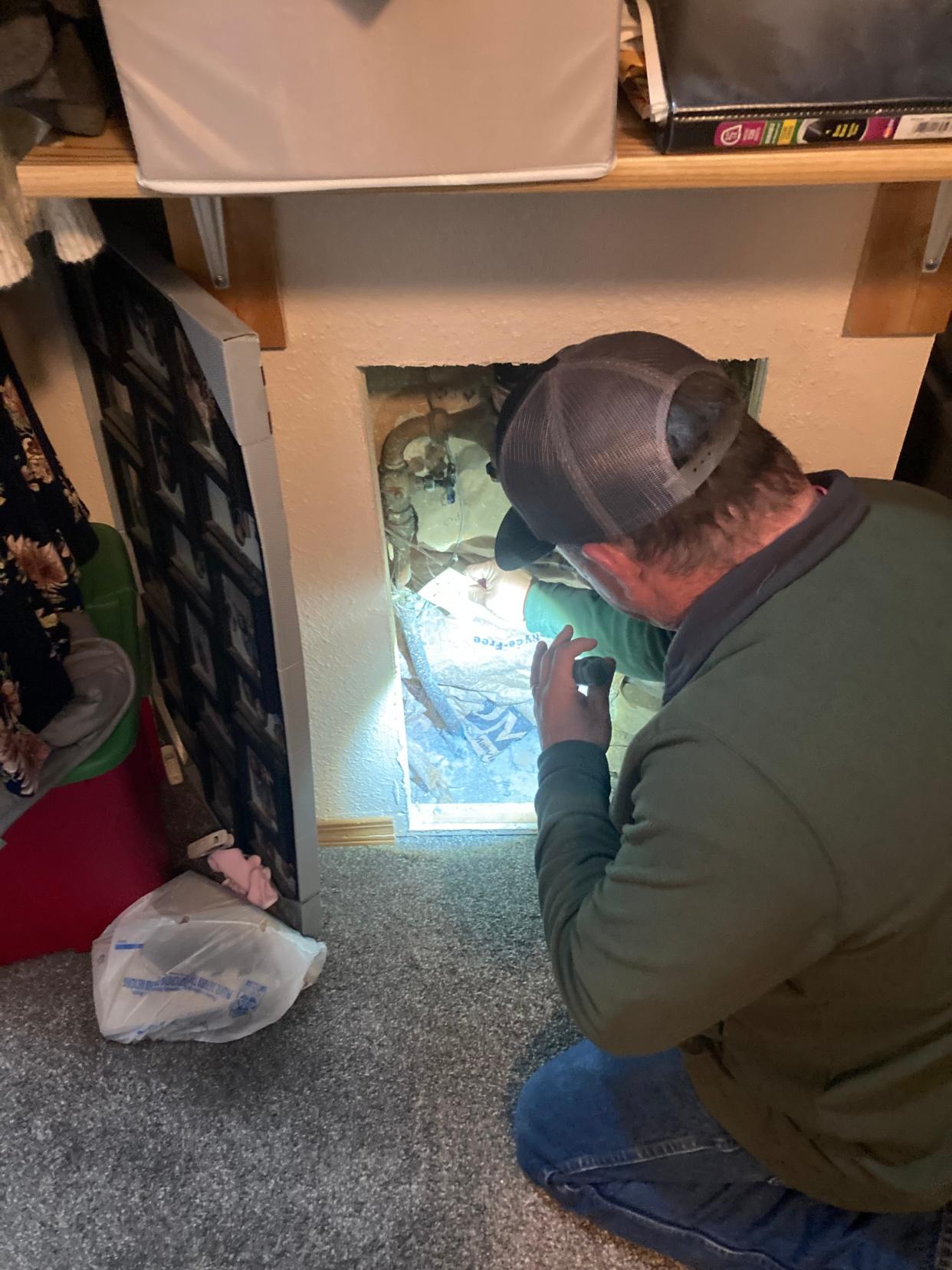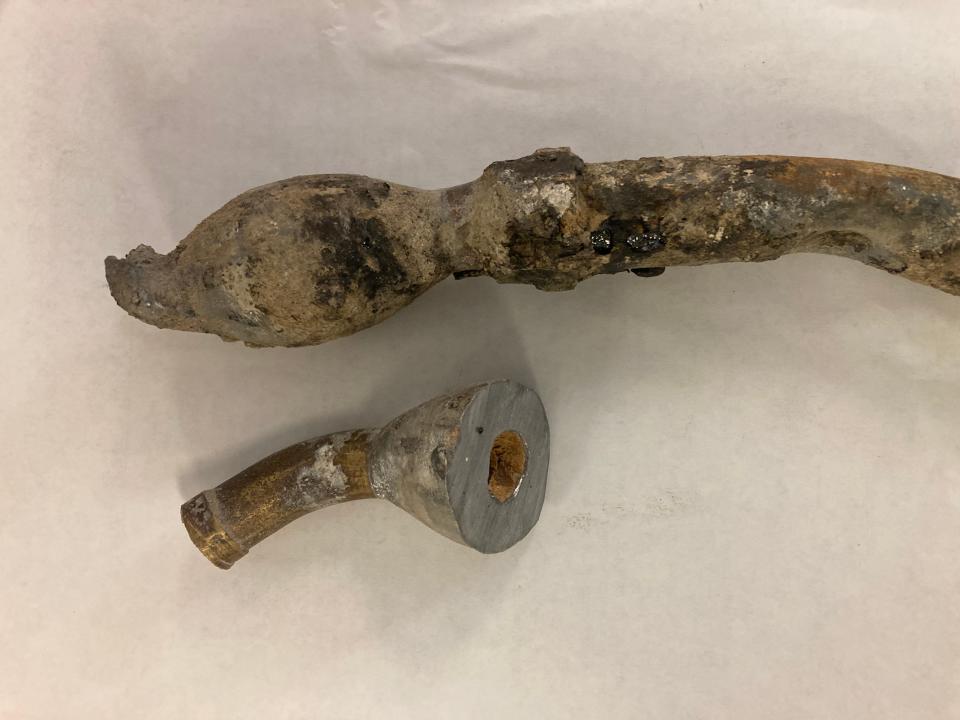'This will be a burden on all of us': Hundreds to be asked to remove lead water lines

Tougher federal regulation on lead contamination will likely mean hundreds of Great Falls homeowners will be asked to replace their water lines.
In December 2021 the Environmental Protection Agency (EPA) announced it would be significantly strengthening federal standards on lead contamination in the nation’s drinking water. The main goal of rule revisions is to replace all lead water service lines across the United States by 2035.
Lead is a toxic metal that is persistent in the environment and can accumulate in the body over time. According to the Centers for Disease Control and Prevention (CDC) concerns over lead poisoning are particularly critical in children. Even very low levels of lead in children has been shown to affect learning, the ability to pay attention and academic achievement. Often these effects are irreversible.
The primary source for lead contamination is aging lead pipe water service lines connecting the public water main to a customer’s water meter. To advance the effort to remove lead service lines the Biden Administration authorized nearly $15 billion in funds from the Bipartisan Federal Infrastructure Bill be used to help pay for it. Most of that money is to be funneled to states, local governments, and other water utility operators over the next five years.
The problem is that the city doesn’t own the water service lines in Great Falls, the individual property owners do, meaning that at least hundreds and possibly thousands of property owners could be on the hook to replace their old lead waters lines with little or no direct government support or financial assistance. It’s a regulatory roadblock that has left city officials concerned and frustrated.
“We want to explore options to help, assist property owners in replacing those lines; however, that project is now on hold,” Great Falls Public Works Director Chris Gaub told city commissioners during a special work session last week. “The friction point is that in a city where we don’t own the service lines – what’s the EPA going to say about that? Are they going to just leave that silent and let us figure it out?”
City engineers have already identified 693 lead and galvanized steel water lines that will need to be replaced, but that number could be much higher.
James Hewett, manager of the city’s Lead Service Line Replacement Project, said as of now city engineers have been unable to identify the type of water service lines connecting more than 6,000 homes and businesses in Great Falls to the water main. This despite a nearly two-year effort to obtain permission from city property owners in inspect their pipes to see what they’re made of.
“The EPA is requiring us to do a water service line inventory,” Hewett explained. “This program requires we identify all the types of pipe used for water services in Great Falls. Once this is complete, we will have to provide a public inventory of all the locations of lead lines … what areas they are in and what addresses they are at. Also, we’ll be required take water testing samples from each location that does have a lead line.”
The water service line inventory only applies to service lines installed prior to 1970. However, the rule revisions extend beyond lead pipes to include galvanized steel ones too.

“Galvanized pipe will absorb lead particles from the water,” Hewett told commissioners. “Once those lead particles are absorbed it will redistribute that back into the water system. The EPA requires they be considered lead lines.”
“Originally this project was to replace 20 known lead service lines from the water main in the street to the water meter in the home,” he added. “We originally estimated it would take around $300,000, but if you were to look at this from the eyes of the EPA right now, the City of Great Falls has 6,825 lines that need to be replaced.”
Hewett noted that fewer than 5% of the 15,785 properties the city already has data on turned out to have lead or galvanized pipe. However, even if a similarly small percentage of the uninspected water service lines need replacement, the total cost could run into the millions.
Beginning in the spring of 2023 the Public Works Department began looking for ways to lower the cost to homeowners to replace water service lines. Hewett said they hoped to develop a cost sharing program using money allocated to the state from the Federal Infrastructure Bill. According to Hewett that plan ran into an immediate regulatory obstacle.
“The original idea was to take advantage of some money that was available from a SRF loan (Drinking Water State Revolving Fund) through the federal government and the State of Montana,” he explained. “The way the loan would have worked is, if it cost a homeowner $10,000 to replace a lead line and they were enrolled in our program, 60% of that cost would be forgiven through the SRF loan. That would leave the homeowner responsible for the remaining $4,000.
“As we started applying for the SRF loan the Montana Department of Environmental Quality (DEQ) informed us that we could not pass that 40% on to the homeowners. If the city took out the SRF loan, the liability would go 100% to the city which would then have to pass that on to all the rate payers throughout the city.”
One of the big obstacles city officials face is that sure of the exact size and scope of the lead and galvanized pipe problem in Great Falls. Since June of 2022 the Great Falls Public Works Department has sent out 10,000 mailers to folks with water service lines installed prior to 1970. Engineering technicians have made more than 3,500 follow-up calls to non-responders but thus far only a fraction of homeowners have responded to Public Works Department’s requests.
“Some of the problems that we’re running into is that homeowners are not returning messages left by the inspectors – they’re hanging up on them,” Hewett told the commissioners. “We have homeowners choosing not to participate and are coming across invalid phone numbers. The important thing we have to remember about the water line service inventory is that it has to be completed by October of this year.”
City Engineer Jesse Patton noted that the city is unlikely to face any type of punitive action if they are unable to submit a comprehensive inventory of water service lines by the Oct. 16 deadline.
“The issue is that we don’t have permission to go onto private property without their permission,” Patton said. “If they won’t let us come in and determine whether it’s a lead line then we’re required to make four good faith attempts: mailers, calling, inspector home visits, that kind of thing. Once we’ve done that the EPA will say – you’ve done your due diligence. It doesn’t count against you anymore and you don’t have to replace it.”
That doesn’t mean the city won’t have to bear a significant cost. The Public Works Department has already spent $426,000 to carry out the EPA mandated water service line inventory and the costs won’t stop there.
“We have to re-engage with the homeowner every time the name on the water bill changes,” Patton explained. “Then we have to complete four more good faith efforts. Every year we have to send out a new mailing reminding our customers of the rule revisions.”
The Public Works Department plans to make 2,500 additional follow-up calls in the months ahead, and to explore the option of beginning two-person home visits for non-responders. Individual property owners are also encouraged to download a test instruction form at www.greatfallsmt.net/publicworks/water-service-line-inventory, make their own physical inspection, take a photograph of their pipes and submit it to the Public Works Department. All of this is expected to demand additional overtime for city employees.
“This will be a burden on all of us, not just the property owners,” Gaub told the commissioners. “This will be a burden on the city as well and all the rate payers.”
This article originally appeared on Great Falls Tribune: EPA rules may mean hundreds in Great Falls must replace water lines

